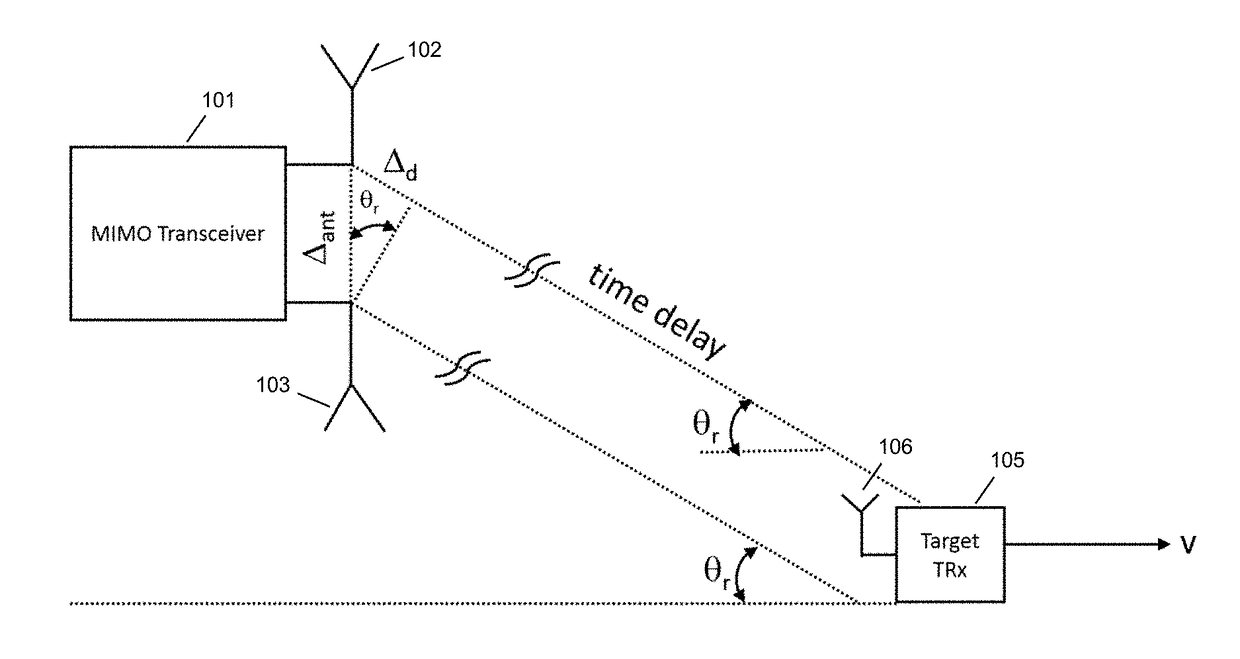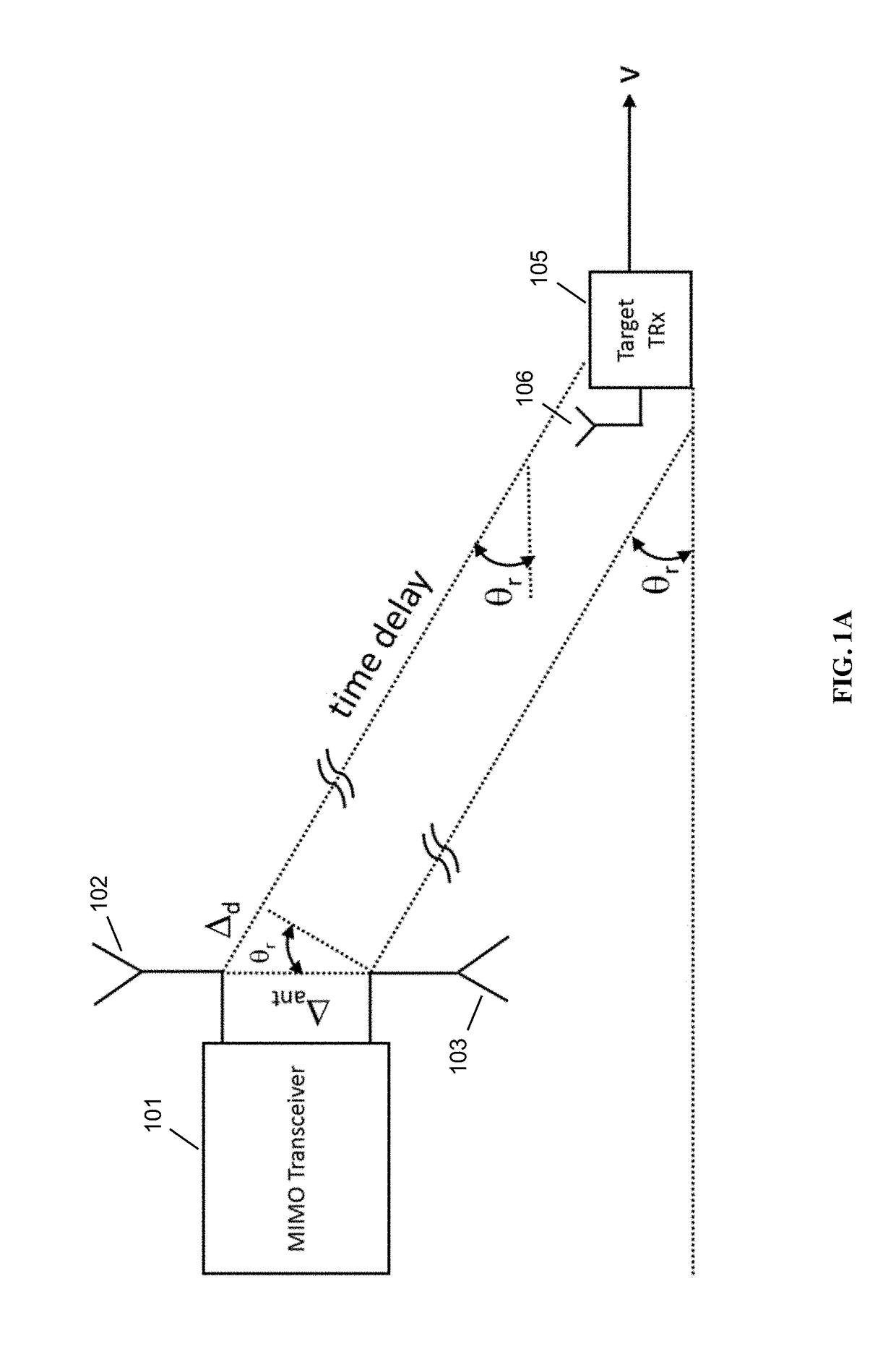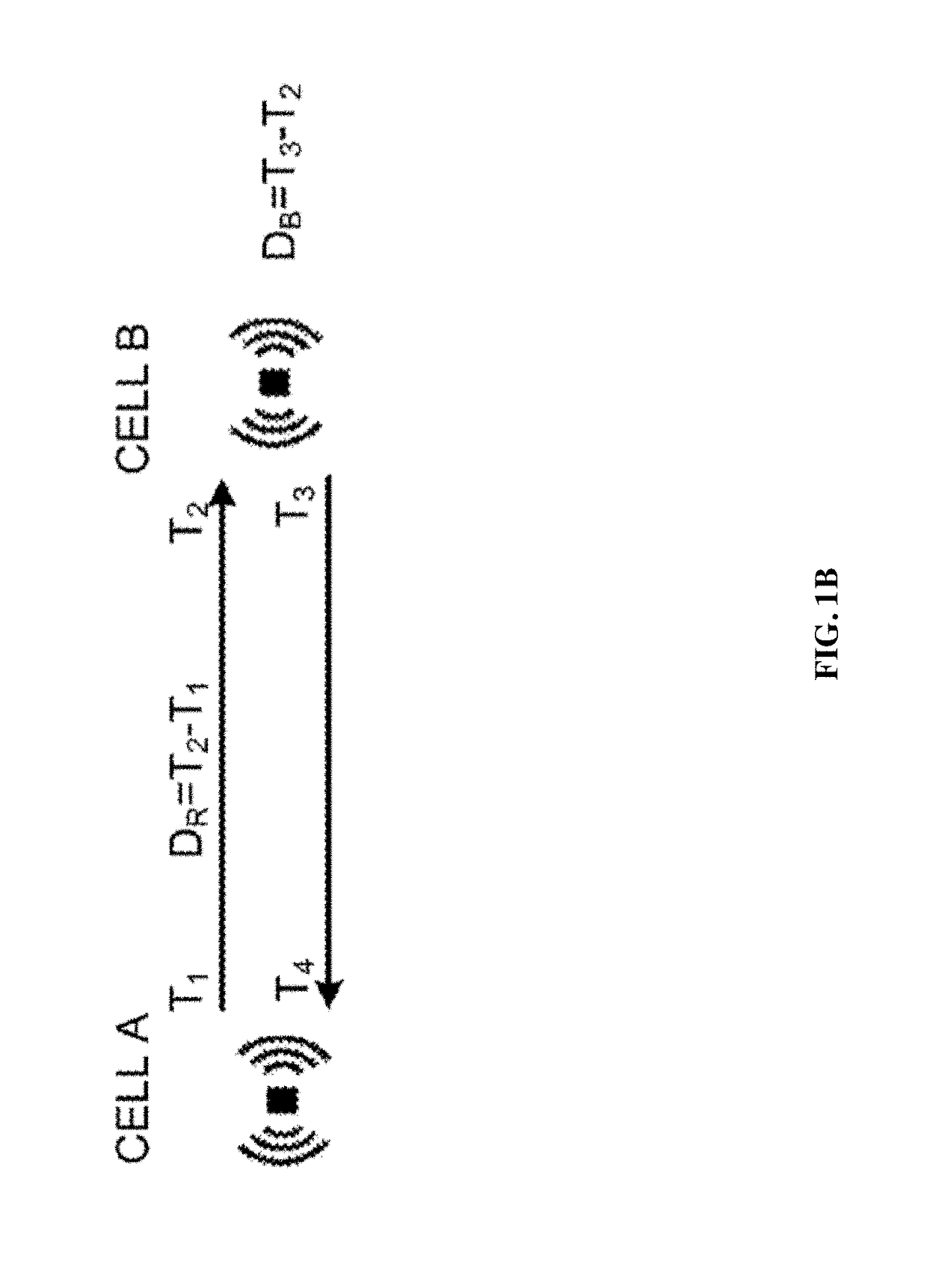Angle of Arrival Measurements Using RF Carrier Synchronization and Phase Alignment Methods
a technology of rf carrier and angle of arrival, applied in the direction of synchronisation arrangement, baseband system details, instruments, etc., can solve the problems of delay measurement of phase measurements, ineffective method, and high cost of the overall system,
- Summary
- Abstract
- Description
- Claims
- Application Information
AI Technical Summary
Benefits of technology
Problems solved by technology
Method used
Image
Examples
Embodiment Construction
[0040]The present disclosure takes advantage of the methods of achieving highly accurate RF Carrier Synchronization and Phase Alignment as described in U.S. Pat. Nos. 9,048,979 and 9,048,980. Our disclosed methods utilize statistical nature of random quadrature modulated signal in order to accurately measure frequency offset and initial phase offset in the received carrier signal.
[0041]Our method of measuring angle of arrival uses standard widely available commercial off the shelf radio equipment and supports different antenna configurations.
[0042]See U.S. Pat. No. 9,048,980 and the other documents referred to herein (each hereby incorporated by reference in their entirety) for a detailed description of the RF Carrier Synchronization and Phase Alignment Methods that allows a highly accurate carrier frequency offset measurement in the order of 1 ppb or better and initial phase offset measurement in the order of 0.1 degrees or better. Also in these documents is a description of a freq...
PUM
 Login to View More
Login to View More Abstract
Description
Claims
Application Information
 Login to View More
Login to View More - R&D
- Intellectual Property
- Life Sciences
- Materials
- Tech Scout
- Unparalleled Data Quality
- Higher Quality Content
- 60% Fewer Hallucinations
Browse by: Latest US Patents, China's latest patents, Technical Efficacy Thesaurus, Application Domain, Technology Topic, Popular Technical Reports.
© 2025 PatSnap. All rights reserved.Legal|Privacy policy|Modern Slavery Act Transparency Statement|Sitemap|About US| Contact US: help@patsnap.com



